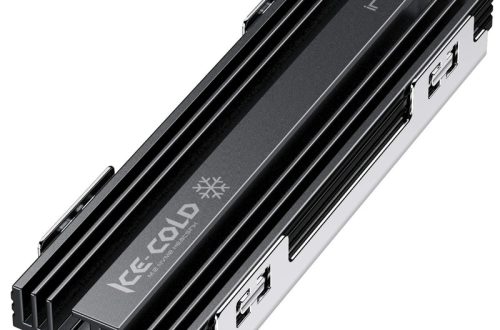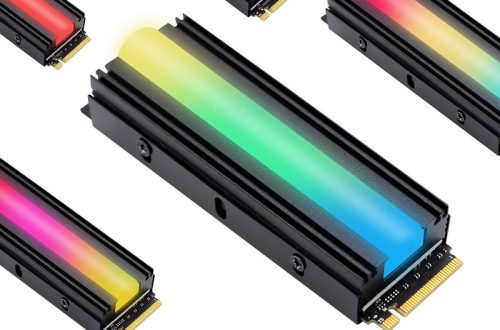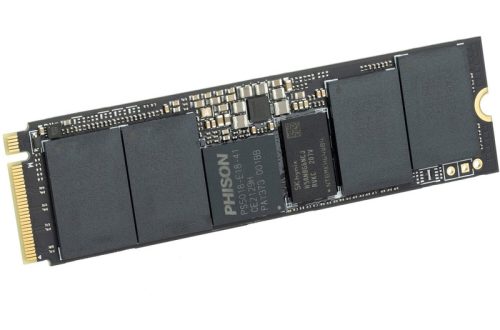Part 1: Understanding the Significance of CPU Drivers
CPU drivers play a crucial role in ensuring the optimal performance and functionality of a computer’s central processing unit. Here are two key points to understand about the significance of CPU drivers:
1. Hardware Interaction:
CPU drivers are integral to the operation of the central processing unit (CPU) as they act as the intermediary link between the operating system and the hardware components. These drivers play a crucial role in facilitating smooth communication and interaction between the hardware and the OS. They are essential for enabling the operating system to effectively utilize the CPU’s capabilities, including executing instructions, managing processes, and handling data. By providing the necessary instructions and information, CPU drivers enable the seamless integration and coordination of the CPU with other hardware components of the system. This ensures that the CPU functions optimally and efficiently, allowing for the execution of various tasks and the smooth handling of processes. Additionally, updated CPU drivers can also enhance system security, stability, and performance, making them vital for the overall functionality and usability of the computing system.

2. System Stability and Compatibility:
Outdated CPU drivers can restrict the CPU‘s ability to perform optimally, leading to decreased system responsiveness, slower processing speeds, and longer load times for applications. This can negatively impact overall productivity and user experience. In addition to performance issues, outdated CPU drivers can create security vulnerabilities, making the system susceptible to potential exploits and cyber threats. Unsupported drivers may contain unpatched security flaws, exposing the system to malicious attacks and compromising data security.
Moreover, the presence of outdated drivers can also result in compatibility issues with new software and hardware updates, leading to system instability and frequent crashes. It is crucial to regularly update CPU drivers to ensure both optimal performance and robust security for the system. By keeping drivers up to date, users can not only enhance the efficiency of their CPU but also mitigate the risks associated with outdated drivers. This proactive approach can help maintain a secure and reliable computing environment while also maximizing the system’s potential for smooth and responsive operation.
Part 2: Impact of Outdated CPU Drivers
Outdated CPU drivers can significantly impact the overall performance and stability of a computer system. Here are two key points regarding the impact of outdated CPU drivers:
1. Reduced Performance:
In addition to performance issues, outdated CPU drivers can create security vulnerabilities, making the system susceptible to potential exploits and cyber threats. Unsupported drivers may contain unpatched security flaws, exposing the system to malicious attacks and compromising data security. Moreover, the presence of outdated drivers can also result in compatibility issues with new software and hardware updates, leading to system instability and frequent crashes. It is crucial to regularly update CPU drivers to ensure both optimal performance and robust security for the system. By keeping drivers up to date, users can not only enhance the efficiency of their CPU but also mitigate the risks associated with outdated drivers. This proactive approach can help maintain a secure and reliable computing environment while also maximizing the system’s potential for smooth and responsive operation.
2. System Vulnerabilities:
Outdated CPU drivers can also lead to performance issues and system instability, causing frequent crashes and errors. This can disrupt productivity and hamper the overall user experience. Additionally, unsupported drivers may not be optimized for the latest software and hardware updates, leading to compatibility issues and decreased system efficiency. It is important to regularly update CPU drivers to ensure the security and optimal performance of the system.

Part 3: Importance of Regular Driver Updates
Regularly updating CPU drivers is essential for maintaining peak performance and security. Here are two key points highlighting the importance of regular driver updates:
1. Performance Optimization:
Through regular driver updates, manufacturers proactively address various aspects affecting the CPU’s performance. They resolve performance bottlenecks, compatibility issues, and efficiency enhancements, ultimately leading to improved CPU performance and stability. Updated drivers are designed to incorporate optimizations that enable the CPU to leverage its full potential, enhancing overall system responsiveness and efficiency. These optimizations can include improvements in power management, memory allocation, and multitasking, resulting in better resource utilization and overall system performance. Manufacturers also fine-tune the drivers to ensure better compatibility with applications and hardware, further enhancing the CPU’s capability to work seamlessly within the system. By incorporating these optimizations, updated drivers enable the CPU to function at maximum efficiency, providing users with a smoother and more responsive computing experience. Therefore, staying up-to-date with driver updates is paramount for harnessing the full potential of the CPU and maintaining overall system efficiency.
2. Security Enhancements:
Regular driver updates also help to improve system stability by addressing potential compatibility issues and preventing system crashes. Additionally, updated drivers can enhance the overall performance of the CPU by optimizing its interaction with other hardware components, leading to faster processing speeds and reduced latency. Moreover, keeping drivers current ensures that the CPU remains compatible with the latest software and hardware, minimizing the risk of system conflicts. Overall, the benefits of updating CPU drivers extend beyond performance improvements, encompassing enhanced security, stability, and compatibility, making it a crucial aspect of maintaining an efficient and reliable computing environment.

Part 4: Best Practices for Updating CPU Drivers
When it comes to updating CPU drivers, following best practices ensures a seamless and effective process. Here are two key points outlining best practices for updating CPU drivers:
1. Utilizing Manufacturer’s Official Sources:
Obtaining driver updates directly from the official website or support channels of the CPU manufacturer is crucial for ensuring the authenticity and reliability of the drivers. By doing so, users can minimize the risk of downloading and installing potentially harmful or incompatible software that may compromise the security and stability of the system. Manufacturer-provided updates are tested and verified for compatibility, ensuring they are optimized for the specific hardware components and operating systems. Moreover, official channels often provide support and documentation for the installation process, helping users to effectively update their CPU drivers without encountering potential issues. By obtaining updates from trusted sources, users can have confidence in the integrity and compatibility of the drivers, contributing to a secure and efficient computing environment.
2. Regular Maintenance and Monitoring:
Implementing a routine for driver updates and system maintenance is essential for maximizing CPU efficiency. Users should consistently check for available driver updates from the manufacturer’s website or through the device manager. Additionally, employing tools or utilities that automate the process can streamline the update procedure, ensuring that CPU drivers remain current and optimized for peak performance. Regular updates not only enhance system stability and security but also contribute to improved compatibility with the latest software and hardware releases. By establishing a regular update schedule and utilizing automated tools, users can effectively maintain their CPU’s performance and prevent potential issues caused by outdated drivers. This proactive approach to system maintenance helps to create a reliable and efficient computing environment, ensuring that the CPU operates at its best.
In conclusion, updating CPU drivers is essential for maintaining peak performance, system stability, and security. By understanding the significance of these drivers, addressing the impact of outdated drivers, recognizing the need for regular updates, and following best practices, users can optimize their CPU’s performance and ensure a secure and reliable computing experience.





